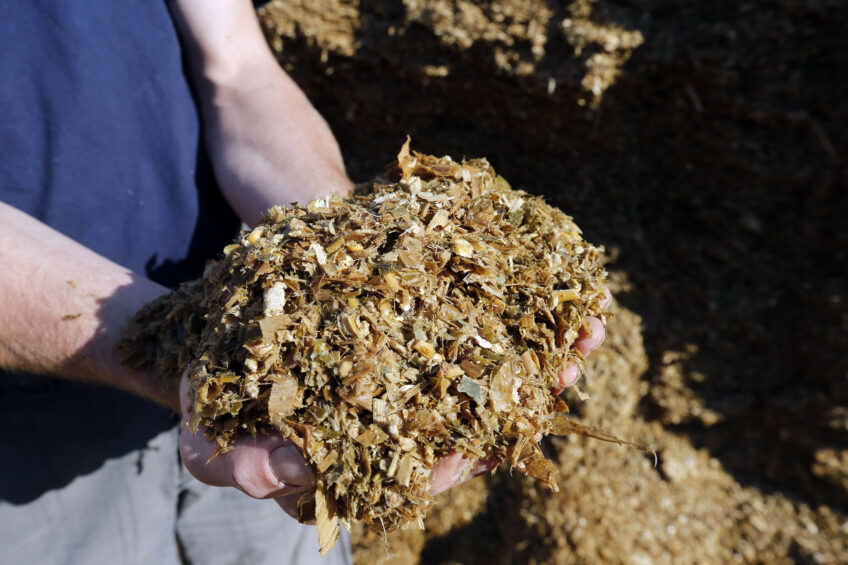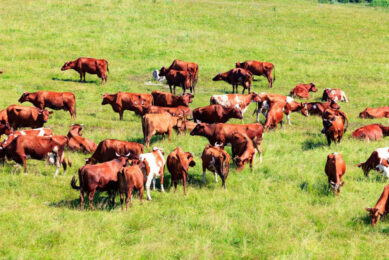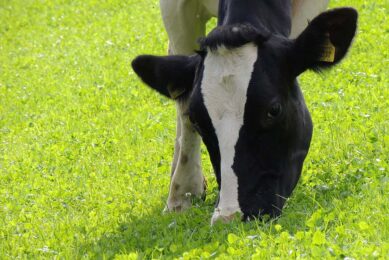Boosting starch digestibility in corn silage for dairy cows

The ruminal starch degradability of corn silage depends on the growing and harvesting conditions. When this is low, an enzyme can be added to the feed to boost degradability and hence animal production, fertility and herd profitability.
For all dairy farmers, achieving herd efficiency and increasing milk yield are top priorities. For this reason, dairy producers invest in corn silage and corn grain that will deliver the most in terms of energy concentration as well as cost savings. In this process, special attention is paid to the starch content of corn (a potent source of energy for milk production) and its rumen degradability, as well as fibre content and digestibility. Corn silage and high moisture corn are typically high in starch availability and therefore result in the production of good quality milk.
However, 2016 was particularly challenging for dairy farmers due to the unusually rapid corn drying during the summer months, which lead to very mature grain with increased vitreousness and, as a result, decreased ruminal starch degradability. This was particularly evident in some parts of Europe, where corn dried at a rate of 1.5% per day, three times the normal rate. As ruminal corn starch digestibility is strongly influenced by corn maturity, farmers have found corn silage to be higher in by-pass starch, which means less starch is being digested in dairy cow rumen. This negative impact on feed utilisation and waste of energy supply is associated with reduced cow performance i.e. lower milk production, decreased milk quality and poorer fertility as well as significant incurring costs.
Assessing starch digestibility
Low starch digestibility can be assessed by farmers in a number of ways. For instance, normal amounts of starch in faeces are typically lower than 3%. However, decreased degradability in the rumen shifts starch digestion towards the intestines. As cows have a limited capacity to digest starch entering the duodenum, farmers may see higher amounts of corn grain and starch excreted in the faeces. This not only implies less available digestible starch to the cow but it also indicates decreased rumen function resulting in reduced fibre digestion. In this case, dairy farmers can take a number of steps to promote better herd efficiency and milk productivity from the corn grain they produce. These include keeping corn silage for longer so as to increase starch digestibility, reducing the amount of corn silage in the ration, using a different grain processing method and/or increasing the amount of rumen fermentable starch. However, these solutions have limitations in application. This is because old corn, or corn kept for an extended period of time, will also result in poor cow performance, and farmers may have limited space for prolonged corn storage. For this reason, a new approach involving the addition of the feed enzyme amylase has been recently developed to help maximise corn starch utilisation and fibre digestion in cows.

Increasing the digestibility of starch
Supplying an enzyme to dairy cow feed will increase the efficiency of corn starch utilisation and energy supply to the cow resulting in less starch wasted and less fibre in the faeces. A tested enzyme* (hereafter called alpha amylase) proved to do so by catalysing the breakdown of corn starch to oligosaccharides (carbohydrates composed of simple sugars) in the rumen. Oligosaccharides are then used as an energy source by fibre degrading microbes in the rumen and rate of fibre digestion is increased. Improved fibre digestibility delivers more acetate in the rumen, which is then absorbed into the blood, enters the udder and is used to help produce milk fat in the cow. Rumen pH remains unchanged with the use of this particular feed additive, resulting in improved digestibility with no reduction in rumen health, more milk, a better energy balance and most significantly, better herd efficiency. A trial with the alpha amylase was done to show the effect on the starch digestibility in mature corn silage. It was shown that by adding the alpha amylase, faeces starch reduced by 36% after 14 days and there was less fibre in the faeces proving that NDF and starch digestibility was significantly increased. The pH of cow faeces had also increased demonstrating less fermentation of starch in the large intestine and reduced waste; and less ingested ingredients were excreted in the faeces after 21 days following the addition of amylase enzymes.
Also interesting: The effect of maize cutting height on cows
Conclusion
These results suggest the addition of a feed additive such as amylase releases more of the starch energy in corn-based rations, providing more energy to dairy cows and increasing forage digestion. As a result, cows make better, more efficient use of their total diet, which results in reduced feed costs and boosts milk yield, efficiency and quality as well as fertility and herd profitability.
*Ronozyme® RumiStar™










